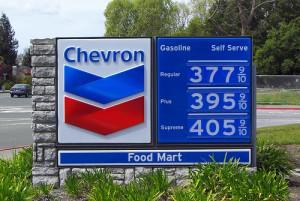 With gas prices at their highest level during his presidency, last month President Obama announced an increase in domestic production of oil. Namely the battered Gulf of Mexico and Alaskan oil fields have been targeted for the increases. Ostensibly this policy decision comes on the heels of $4 per gallon gas and his constituency calling, neigh demanding action. Unfortunately the increased production of a finite source is not the answer; it is the political answer but not the correct one.
With gas prices at their highest level during his presidency, last month President Obama announced an increase in domestic production of oil. Namely the battered Gulf of Mexico and Alaskan oil fields have been targeted for the increases. Ostensibly this policy decision comes on the heels of $4 per gallon gas and his constituency calling, neigh demanding action. Unfortunately the increased production of a finite source is not the answer; it is the political answer but not the correct one.
As unpopular as this sounds, the answer is to reduce consumption. This is not news, or new for that matter. It was unpopular when President Carter suggested it more than three decades ago. Although unscientific and incomplete, our poll from a few weeks ago indicated that a number of respondents already take measures that minimize their fuel consumption. However, it has become increasingly clear to us here at 2nd Green Revolution that our readers represent a distinct minority when it comes to behavioral changes that may be necessary to reduce consumption and reliance on nonrenewable sources of energy, as well as imported resources. Behavioral shifts were evident in 2008 when gas prices reached the same levels. Similar changes may be occurring due to current high prices. Pictures from Dallas showed Park and Ride lots full with commuters catching the train. A few short months later, the New York Times mentioned that these lots were no longer full, but rather quite empty as a result of gas that was half as expensive.
Travel to Europe and $4 per gallon gas (yes, convert from the metric system which uses liters) seems reasonable. CNN offers a comparison of gasoline prices in select cities across the globe. Also, the fact filled NationMaster.com has a bar graph depicting the price of a gallon as a weighted average. The U.S. is tied for 101st on the list of most expensive gas prices in the world, showing just how cheap gas is here compared to other countries. If the world average is $1, the consumers in the U.S. would pay 23 cents less than average at just 77 cents per gallon. However, trying to get Americans to reduce fuel consumption has proven down right impossible across the board. Small pockets of people biking to work, riding public transportation, or carpooling can be seen in some instances. These small measures are important, but the challenge remains bringing them to the masses. As in the 2008 example, sustained higher prices will impact consumer behavior. Yet, these changes are often short-lived, especially when the price of gasoline drops.
While public transportation may not be “sexy”, there are distinct benefits beyond the pocket book. Unfortunately, it does not appear enough people are willing to give up their 2-ton security blankets. The physics of moving millions of vehicles with only one person each indicates that roughly 90% the energy used to move a car does just that, move the car, not the driver. The road to a more efficient economy and reduced oil consumption starts with keeping gasoline prices where they are and getting consumers to change their behavior.
[Image source]

